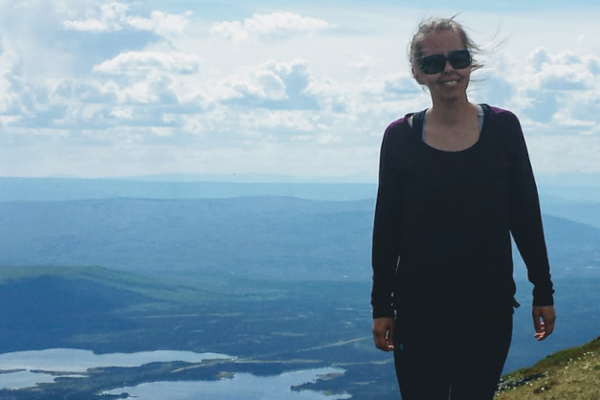
Making a difference: JSGS student supports Yukon First Nation initiative to improve education outcomes
It is a common belief that providing young people with a good education should give them a better chance at life. This is especially true when trying to build human capacity while narrowing the socio-economic gap between First Nations and non-First Nations peoples in Canada. But what qualifies as good?
By Erica Schindel, Communications and Marketing Manager“For generations, education was used by Canada to impose its dominance over Indigenous Peoples and provide inadequate educational opportunities. Slowly, the country came to realize that First Nations education, far from being an advantage, was a tool of oppression,” said Dr. Ken Coates (PhD), Canada Research Chair in Regional Innovation and professor in the Johnson Shoyama Graduate School of Public Policy (JSGS) at the University of Saskatchewan (USask).
“Yukon has emerged as an example of the benefits associated with First Nations control of education. The First Nations and the territory have been creative and determined in improving the educational system to better suit Indigenous needs.”
In 2014, the Yukon First Nations released its Action Plan 2014–2024 as a blueprint for strengthening traditional roots and closing the educational gap within its territory. The report reinforced the idea that, “knowing the traditional cultural way of life through seeing, knowing and doing and sustaining our [Yukon First Nations] identities, beliefs, laws, values, and morals should be the foundation upon which all learning is based.”
It called on its partners and stakeholders—including Yukon First Nations leaders, the Government of Yukon, the Government of Canada, Elders, youth, education directors and staff—to work collectively to empower present and future generations. However, despite Yukon-wide initiatives, First Nations students continued to achieve lower than non-First Nations students. So, individual communities stepped forward.

About 400 kilometres north of the capital of Whitehorse and along the Silver Trail and Stewart River, is the small Village of Mayo. Home to the First Nation of Na-Cho Nyak Dun (FNNND), it represents the most northerly community of the Northern Tutchone language and culture group. Like many northern rural communities, Mayo is struggling to keep students engaged with their education. In December 2019, FNNND completed a community report on closing the socio-economic gap between First Nations and non-First Nations residents in Mayo.
“Similar to other community-led reports, ours highlighted educational programming as an essential component in meetings our goals,” said Dr. Anne Tayler (PhD), FNNND executive director. “If we want the children to excel in both First Nations and mainstream societies, we need to determine how best to include Traditional Knowledge, cultural practices, histories and language in their education.”
Around the time the report was released, JSGS Master of Governance and Entrepreneurship in Northern and Indigenous Areas student and FNNND citizen Lauren Wallingham was looking for an opportunity to build capacity in her community through her applied research project. In January 2020, she worked with FNNND to develop a research proposal focused on implementing the community report recommendations. Her proposal was approved by Chief and Council in February.
“There are many challenging priorities within our community in 2020, and COVID-19 brought additional requirements and strains on our capacity. We have to maintain the health and well-being of citizens, and we need to pursue opportunities to strengthen programming and outcomes,” said Tayler. “Lauren’s applied research project provides an opportunity for us to build capacity and develop pragmatic solutions to meet the needs of FNNND children.”
A recipient of USask’s Indigenous Graduate Student Scholarship and a mother of two young children, Wallingham grew up with a deep appreciation for her Traditional Territory, culture and family.
After researching educational programs in Indigenous communities (Yukon, British Columbia, Alaska and Norway) experiencing similar challenges, Wallingham will provide examples of best practices to a community working group comprised of local Elders, Knowledge Keepers and educators. Under their direction, she will develop the framework for three programs: Early Childhood Education Program, In-School Learning Support Program, and After-School Program. The research and framework will be shared with the community.
“Using best practices and local knowledge, we will develop a holistic framework that reflects the realities of living in the North and the traditions of the Northern Tutchone,” said Wallingham. “The goal is to re-engage our children with their education.”
The four components that she intends to cover within the framework are culturally focused programming, delivery models, accountability and evaluation, and support networks—community members, Elders, parents, students, First Nation government, and inter-community.
“If these programs are going to be successful, the control needs to come from our Elders, Knowledge Keepers and educators,” said Wallingham. “I’m honoured to be guided by my working group and I hope the final framework will help strengthen our community.”

